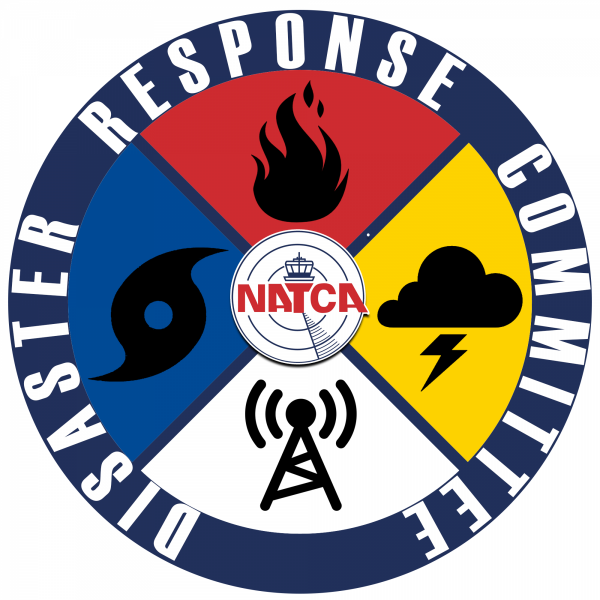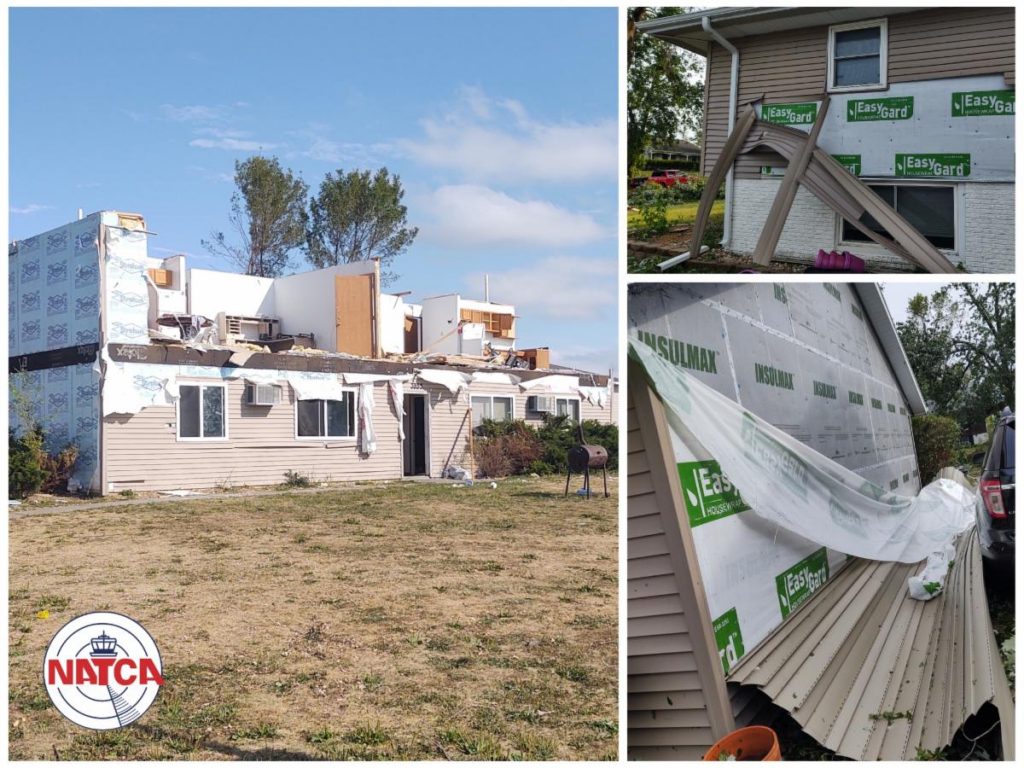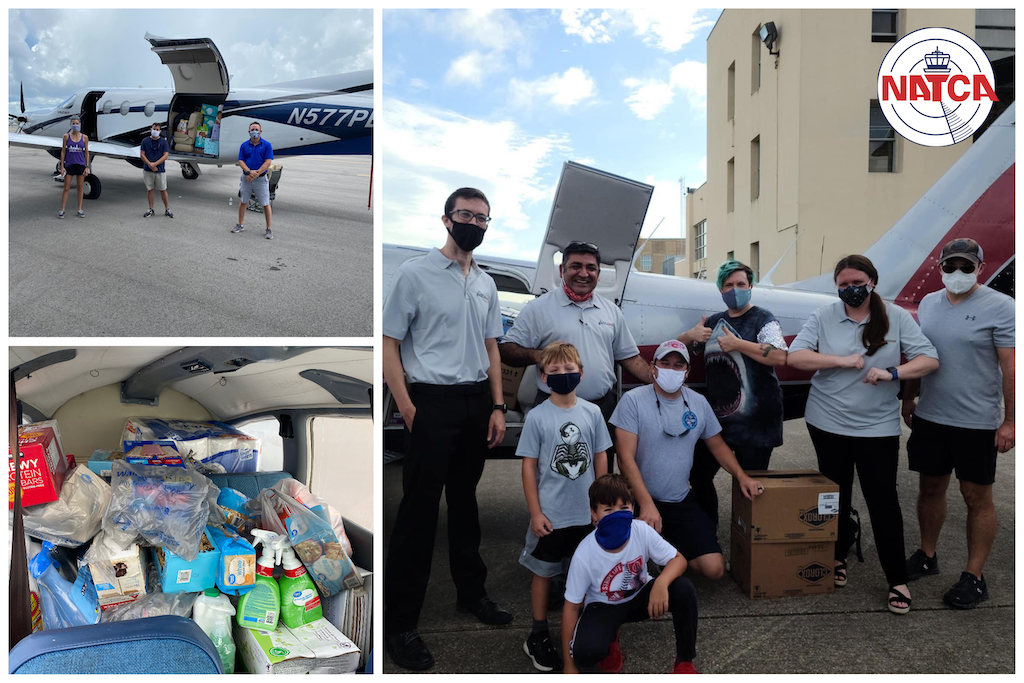
NATCA’s Disaster Response Committee: There When You Need Them
NATCA established a disaster relief fund in 1992 in the wake of Hurricane Andrew in Florida. The fund aids NATCA members who have experienced catastrophic losses of property and helps provide a lifeline during those most desperate times. NATCA works directly with affected members to help them purchase food, gasoline, or any other supplies that might be required, and volunteers work alongside the Disaster Response Committee (DRC) to deliver supplies as soon as the need is known. Recently, the DRC was called upon to respond to disasters in Iowa and along the western Louisiana and eastern Texas Gulf Coast.
“When a disaster strikes, we rely on pre-arranged volunteers throughout various facilities and regions,” said DRC Chair and Miami Center (ZMA) FacRep Tom Flanary. “Some of these volunteers have stepped up in the past, and others have just told us that they wanted to help. They may sit dormant for months until an event actually happens, but in preparation, we keep them in constant communication with us. As the event hits, or after the event, we reach out to these people who then build on their volunteer lists at a facility.”
Some people may elect to cook, transport items and supplies, go shopping for important items, or even go to the disaster area to help rebuild and clean up people’s property. “Using all of these individual pieces and working collectively as a team, is what makes our committee so strong,” Flanary said. “Fortunately for us, we have thousands of NATCA members who stand up strong and respond to these emergencies head on, so it only takes a little coordination, and they’re ready to go. It’s really amazing and awe inspiring how eager people are to help out their brothers and sisters.”
Due to the generosity of the NATCA membership, the disaster relief fund has continued to grow, allowing NATCA members to help those affected after hurricanes, tornadoes, floods, wildfires, and man-made incidents.

On Aug. 10, a derecho, comparable to a Category 2 hurricane, hit the Midwest and lasted about 14 hours. Millions of people across Iowa lost power for days, including members from Cedar Rapids ATCT (CID). “This was pretty devastating,” said CID FacRep Brian Taylor. “There were members with holes in their roofs and flooding in their basements. This was not something we were expecting.”
Something else unexpected was a call to Taylor from the DRC. “They reached out to us to see if we needed any help because they heard what happened,” he said. They got us generators and supplies we needed to get through this.”
“The DRC has been an asset to NATCA members since its inception,” said Central Regional Vice President (RVP) Aaron Merrick. “The work the DRC does is so special and beneficial to our membership in their time of need. Whether it’s hurricane relief or assisting with displaced families dealing with wildfires, the DRC is always ready to jump into action. That was certainly the case with the recent derecho that impacted members of the Central Region in Iowa, including Cedar Rapids. We are thankful we have such a well-run committee within NATCA, ready to help at a moment’s notice.”

Two weeks ago, members in the Southwest Region were affected by Hurricane Laura. The DRC stood ready with generators, gas cans, chainsaws, dehumidifiers, fans, and tools staged in the Houston and Jacksonville, Fla., areas. The DRC was prepared to buy more supplies to support the members. Numerous volunteers stood ready in Houston, Pensacola, Fla., and Mobile, Ala., ready to help. The DRC coordinated with local disaster groups who planned to fly in supplies and were prepared with satellite phones to be overnighted to Houston if necessary for vital communications. Additionally, New Orleans-Moisant ATCT (MSY) member Christina Messina last week organized a response of supplies which was flown to Lake Charles with the Aerial Relief Network, formerly known as the Cajun Airlift that was started during Hurricane Harvey three years ago.
“NATCA’s Disaster Response Committee has been truly invaluable in assisting our members and their families as they work to recover from this devastating storm,” said Southwest RVP Andrew LeBovidge. “The DRC established lines of communications early and kept everyone connected and informed in real time. By coordinating with all the surrounding facilities and leadership at the regional level, the DRC was able to get necessary supplies to those in need and to organize a volunteer army to provide assistance with clearing debris, tarping damaged roofs, ripping out sheetrock, feeding controllers and their families, etc. All of us in the Southwest Region are incredibly grateful for the DRC’s assistance, as well as for the outpouring of support from our NATCA family throughout the country.”
“We rely on local volunteers when they are available, and then work in concentric rings to get more volunteers if necessary,” added Flanary. “When the disaster is over, we stand down the teams, keep our volunteers in a database, move on to the next situation, and do it all over again.”
Denver Center (ZDV) member and Northwest Mountain Region DRC member Caty Gallucci got involved with the DRC as a way to be more active in NATCA. “With my background as a New York State EMT (Emergency Medical Technician) and my work with the American Red Cross, I thought the DRC would be a great fit,” she said. “I think the DRC is a unique and excellent resource our Union has for its members and I am proud to be a part of it.”
“I just want the membership to know that the DRC really is following through on what they are supposed to do,” concluded Taylor.
There are several ways members can give to the DRC:
- PayPal your donation to [email protected].
- Sign up for automatic payroll deduction here.
- Mail personal checks, payable to “Disaster Relief Fund”:
NATCA
Attn: Accounting Department
1325 Massachusetts Ave. NW
Washington, D.C., 20005
- Donate through GoFundMe here.
The DRC stands ready to assist fellow NATCA members. Your donation is always greatly appreciated.
View a photo album of our response efforts in the Gulf Coast region here.

